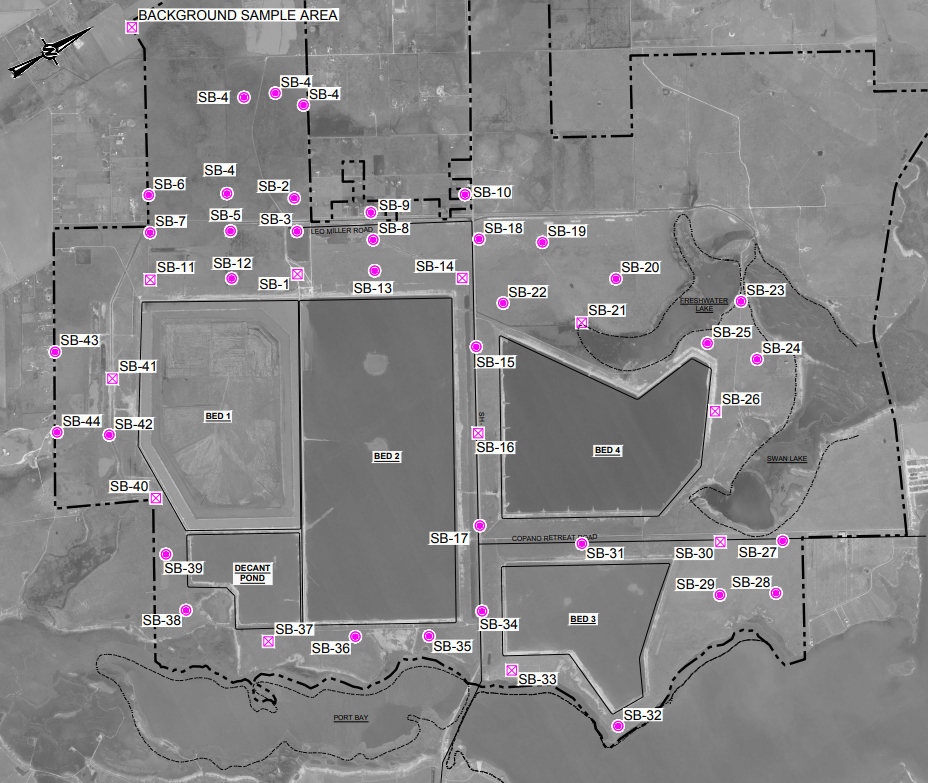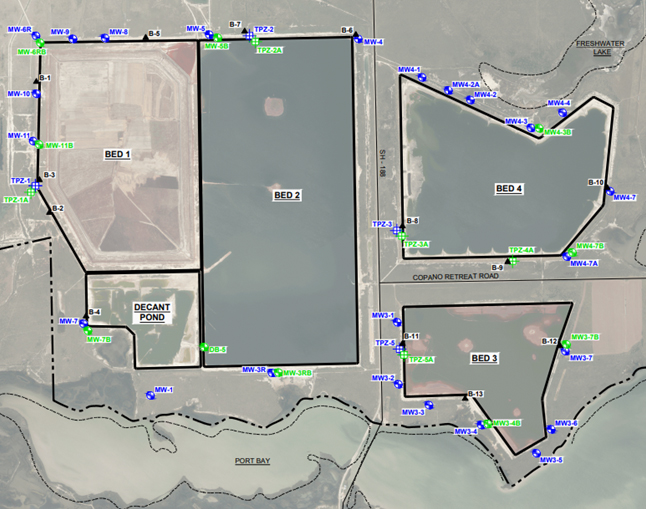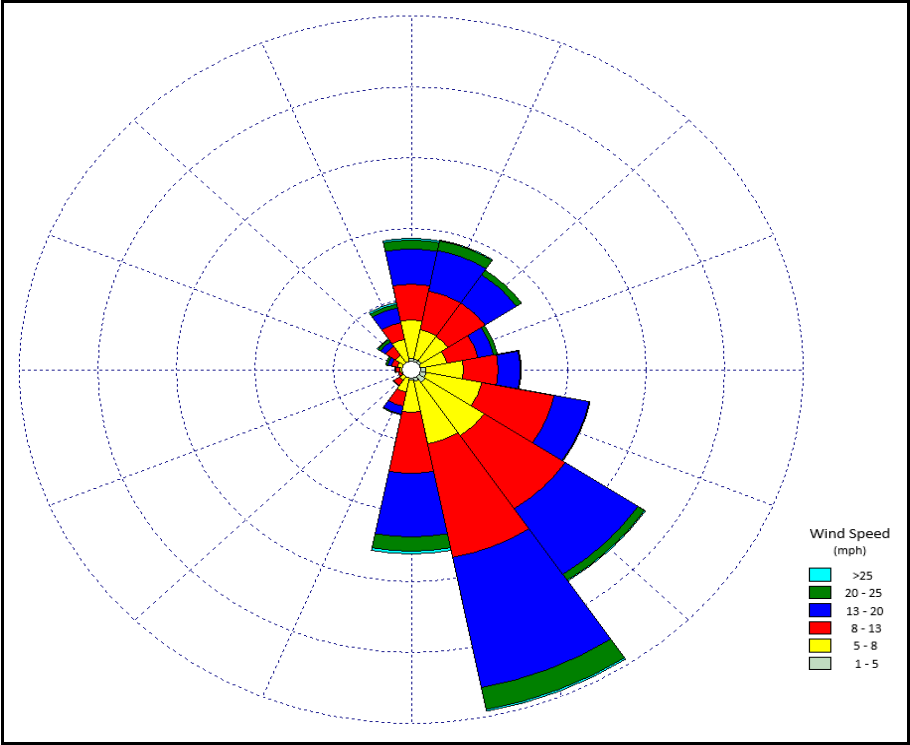
Soil Assessment
Surface soil samples from 44 locations, including areas more than 1.5 miles from the beds, were collected from 0-12 inches below ground level and analyzed for the target suite of analyses. Prevalent wind patterns were considered to select the sample locations.
The results of the soil sampling showed no evidence of a release or contamination in soil from any of the Copano beds.
In addition, concentrations of metals, radium and uranium in the soil samples from areas surrounding the beds were similar to background conditions and were also at levels below specific risk-based criteria established by the TCEQ.





